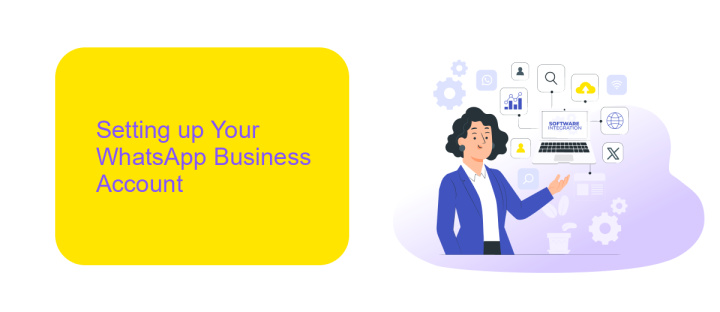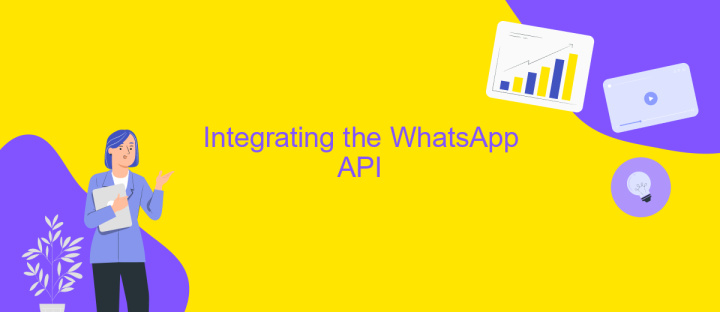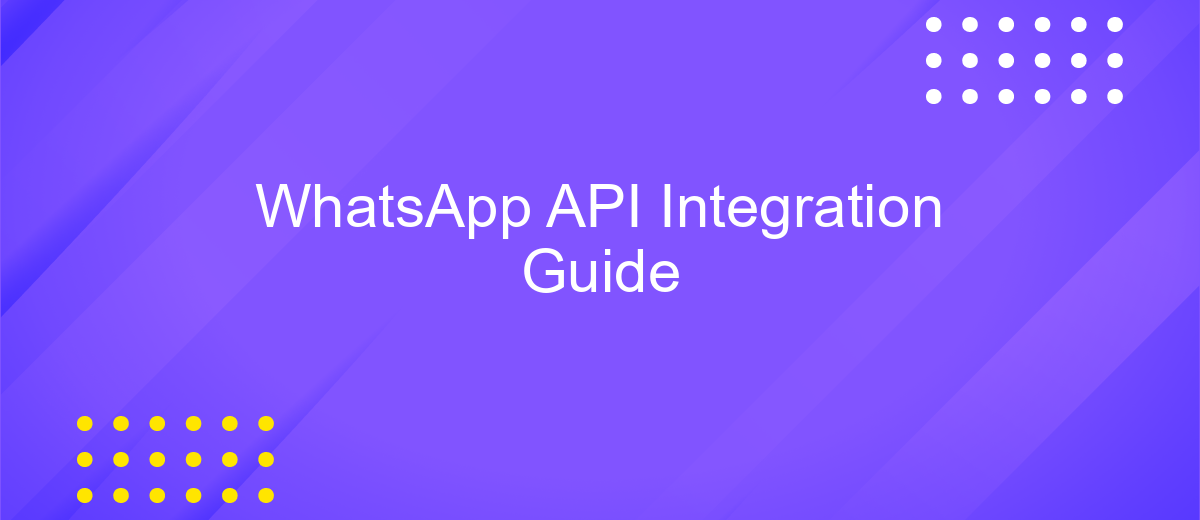WhatsApp API Integration Guide
In today's digital age, seamless communication is crucial for businesses striving to connect with their customers effectively. The WhatsApp API offers a powerful solution, enabling companies to integrate WhatsApp's messaging capabilities into their systems. This guide provides a comprehensive overview of the WhatsApp API integration process, helping businesses enhance customer engagement, streamline operations, and unlock new opportunities for growth through efficient and personalized communication.
Introduction to WhatsApp Business API
The WhatsApp Business API is a powerful tool designed to help businesses communicate more effectively with their customers. By integrating this API, companies can automate, sort, and respond to messages at scale, making customer interactions more efficient and personalized. This solution is ideal for medium to large enterprises looking to enhance their customer service and engagement through a platform that is familiar and widely used globally.
- Facilitates seamless communication with customers.
- Enables automation of message responses.
- Supports integration with CRM systems.
- Allows for secure and reliable messaging.
- Provides detailed analytics and insights.
Implementing the WhatsApp Business API can transform the way businesses interact with their audience, offering a direct and personal communication channel. It not only improves customer satisfaction by providing timely responses but also streamlines business operations by integrating with existing systems. As businesses continue to prioritize digital communication, the WhatsApp Business API stands out as a versatile and essential tool for enhancing customer engagement.
Setting up Your WhatsApp Business Account

To begin setting up your WhatsApp Business Account, first download the WhatsApp Business app from the App Store or Google Play Store. Once installed, open the app and verify your business phone number. Ensure that this number is not already used for a personal WhatsApp account. After verification, complete your business profile by adding essential details such as your business name, profile picture, and a brief description of your services. This information will help customers recognize your brand and understand what you offer.
For businesses looking to integrate WhatsApp with other platforms, consider using services like ApiX-Drive. ApiX-Drive simplifies the integration process by allowing you to connect WhatsApp with various CRM systems, e-commerce platforms, and other business tools without requiring extensive technical knowledge. By automating workflows through ApiX-Drive, you can enhance customer interactions and streamline operations. This integration ensures that you can manage customer inquiries efficiently, providing timely responses and improving overall customer satisfaction.
Integrating the WhatsApp API

Integrating the WhatsApp API into your application can significantly enhance communication capabilities, allowing for seamless interaction with users. To begin the integration process, you need to ensure you have a verified WhatsApp Business Account. This account will serve as your gateway to accessing the API and utilizing its features. Additionally, make sure you have a clear understanding of your use case to optimize the integration effectively.
- Register for a WhatsApp Business Account and verify your phone number.
- Access the WhatsApp Business API documentation for detailed guidance.
- Set up a server to host the WhatsApp Business API client.
- Configure the API client with your WhatsApp Business Account credentials.
- Test the integration using the sandbox environment provided by WhatsApp.
Once you have successfully completed these steps, your application will be ready to send and receive messages through WhatsApp. It's important to monitor the performance of the integration and make necessary adjustments to ensure optimal functionality. Regularly updating your API client and keeping abreast of any changes in the API documentation will help maintain a smooth operation.
Key Features and Use Cases

The WhatsApp API offers a robust platform for businesses to enhance communication with customers, providing a seamless and efficient messaging experience. This integration allows businesses to reach users on a platform they are already familiar with, fostering improved engagement and customer satisfaction. By leveraging the WhatsApp API, companies can automate interactions, streamline customer service, and increase operational efficiency.
One of the key features of the WhatsApp API is its ability to support automated messaging through chatbots, which can handle common queries and provide instant responses. Additionally, the API facilitates secure and reliable communication, ensuring that all messages are encrypted and private. Businesses can also integrate multimedia messaging, allowing them to send images, videos, and documents to enhance customer interactions.
- Automated customer support through chatbots
- Secure, encrypted messaging for privacy
- Integration of multimedia content in messages
- Customizable message templates for efficient communication
- Real-time notifications and updates
These features make the WhatsApp API an invaluable tool for businesses across various industries. Whether it's providing customer support, sending timely notifications, or sharing promotional content, the API enables companies to connect with their audience effectively. By utilizing these capabilities, businesses can improve customer satisfaction and drive growth.


Best Practices and Troubleshooting
When integrating WhatsApp API, ensure a seamless experience by adhering to best practices. First, thoroughly understand the API documentation and its capabilities. This will help in designing a robust integration that aligns with your business needs. Regularly update your API version to leverage new features and security improvements. Use a reputable integration platform like ApiX-Drive to simplify the process, as it offers intuitive tools for connecting WhatsApp with other applications. Testing is crucial; conduct comprehensive tests in a sandbox environment to identify potential issues before going live.
Troubleshooting common issues involves ensuring that your server configurations are correct and that you have the necessary permissions. If messages are not being delivered, check your network connectivity and API credentials. Review error logs for specific error codes, which can provide insights into the problem. If issues persist, consult the WhatsApp API community forums or seek support from integration platforms like ApiX-Drive, which can offer expert guidance and solutions. Regular monitoring and maintenance of your integration will help in preemptively addressing any issues that arise.
FAQ
What is WhatsApp API and why should I integrate it?
How can I start integrating WhatsApp API into my business?
Do I need technical skills to integrate WhatsApp API?
Is there a cost associated with using WhatsApp API?
Can I automate responses using WhatsApp API?
Time is the most valuable resource for business today. Almost half of it is wasted on routine tasks. Your employees are constantly forced to perform monotonous tasks that are difficult to classify as important and specialized. You can leave everything as it is by hiring additional employees, or you can automate most of the business processes using the ApiX-Drive online connector to get rid of unnecessary time and money expenses once and for all. The choice is yours!

